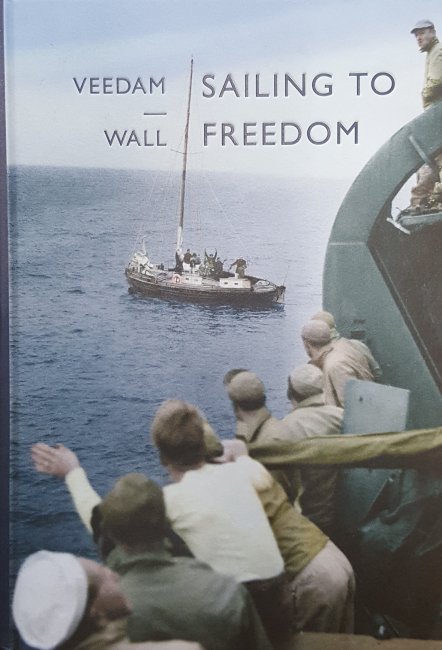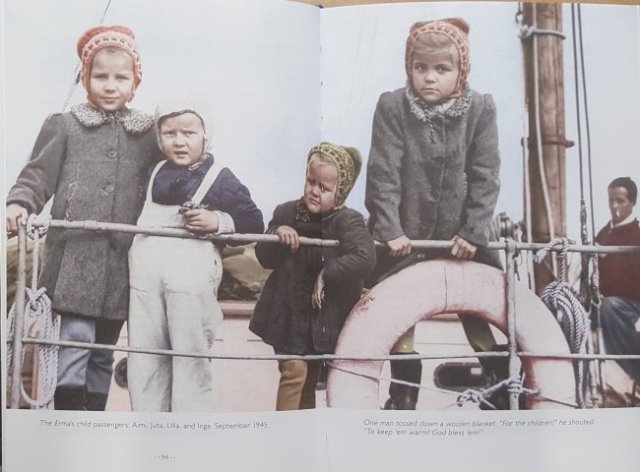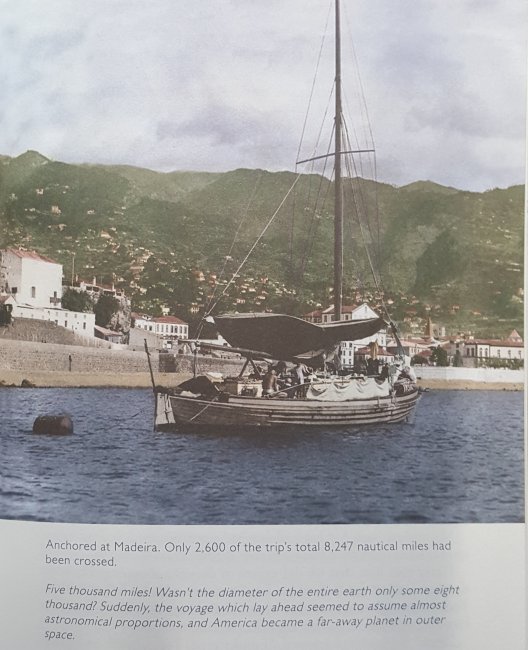This beautiful volume was a gift from a friend in Estonia and tells the tale of sixteen people escaping from the Russians after the annexation of their country post WWII. This edition of the book was published as part of the 100th anniversary of Estonian independence in 2018 and includes a preface by the president of Estonia, Kersti Kaljulaid. Sadly that initial period of independence was snuffed out by the start of World War II with first the Russians then the Germans and finally the Russians again taking control, Estonia would not be independent again until the 20th August 1991. Estonians therefore celebrate two Independence Days, the 23rd February marking the first time they were their own state back in 1918 and the 20th August for the current and longest period of independence the country has had in the centuries it has existed.
During the early 1940’s the Russians instigated mass deportations of ethnic Estonians to Siberia and the majority of those sent there never survived to get back to their own country. To escape these deportations many Estonians sailed across the Baltic to Sweden where they were largely held in camps amongst these escapees were the heroes of this book. They were faced with yet another problem at the end of the war as Sweden was set to send the Estonians back to their own country and Soviet control. In March 1945 Voldemar Veedam was sitting with his friend Harry Paalberg when the first of the letters from the Swedish foreign ministry were received by the refugees informing them that they were to be returned and the Soviets has assured the Swedish government that they would be safe. Needless to say the refugees in Sweden didn’t believe the Soviet assurances and it turned out to be a correct supposition as tens of thousands more Estonians were sent to their doom in Siberia during the 1950’s.

And so the plan was hatched between Voldemar and Harry to escape, this time from Sweden and try to get to the USA. They would need a boat and a few more people to man it and also help raise the money needed for the trip; this was going to be difficult enough never mind the gruelling ocean voyage. Money was tight and they couldn’t get more from family abroad as Swedish law severely limited the amount that could be sent to the refugees. In the end they managed to purchase a 36½ foot long (11.1m) by 13 foot wide (4m) sloop called Erma and an erratic diesel engine, but only by taking so many people into the escape attempt that the crew numbered twelve adults and four children. Working out how to get all those people on board with sufficient provisions and still be able to sail was a logistical nightmare. So much so that one of the recurring themes is the amazement of bystanders whenever they did manage to make it to a port as to how so many people were aboard. When they bought her Erma was over fifty years old and had been out of the water for years so leaked badly when she was refloated.

There was a massive amount of work needed to make Erma seaworthy and this took far longer than any of them hoped even with four men working up to sixteen hours a day rebuilding the boat to be able to get everyone on board. So much so that instead of the hoped for summer departure it drifted into the autumn and meant that they ended up crossing the Atlantic during November and December. This undoubtedly increased the amount of bad weather they hit during the crossing and caused a lot of the delays which hit their rations hard. It really is a magnificent tale of daring-do and remarkable seamanship that they managed to get all the way making repairs to their tiny vessel whilst on the way.

When the book came out it appears from some of the blurbs reproduced from the old book covers that the trip was compared with that of Norwegian Thor Heyerdahl and his crew on the Kon-Tiki expedition whose book had been published a few years earlier. Somewhat unfairly I feel as his was a well funded trip (along with equipment from the US Army) with no pressure on him other than to prove his own theories. The sixteen people on the Erma had no such backup and made an amazing trip out of desperation to avoid the Soviet oppression in their homeland. I’m amazed that I haven’t come across this book before especially as it was clearly an international best seller in the 1950’s but checking on Amazon it appears that it is no longer in print apart from the edition I have now read which despite being in English does not appear to be available here. Thank you Christel for a fantastic gift which I have greatly enjoyed reading.

The copy I have was published by Eesti Mälu Instituut, The Estonian Institute of Historical Memory, and a beautiful job they have made of it. The colourised photos from the trip, a couple of which are reproduced above, are wonderfully atmospheric and the inclusion of lots of covers of previous editions appeals to me as a book collector as well as showing just how popular this book has been around the world. Surprisingly, to me at least, the book was originally written in English by Veedam with the assistance of Carl B Wall who was an American journalist. It was first published in a much shorter form as The Cruise of the Erma in the February 1947 edition of Readers Digest and subsequently expanded in 1952 to the text that is now used. The front cover photo was taken from the American patrol boat John P. Gray soon after they had found the Erma and re-provisioned them for the final few days journey to an American port and journeys end.
Below are some more international translations, including ones on the right where the cover designer has clearly not read the book and has no idea what sort of boat Erma actually was.


I don’t know whether my earlier comment was sent. I was congratulating you on your site and particularly on your post about sailing to freedom. I’m thinking about republishing this as an ebook but wondered whether your copy gives any clue who owns the copy right. I have also emailed the Estonian Institute of Historical Memory
LikeLike
The Estonian Institute of Historical Memory has the republishing rights according to the inside of the book so you have approached the right people
LikeLike